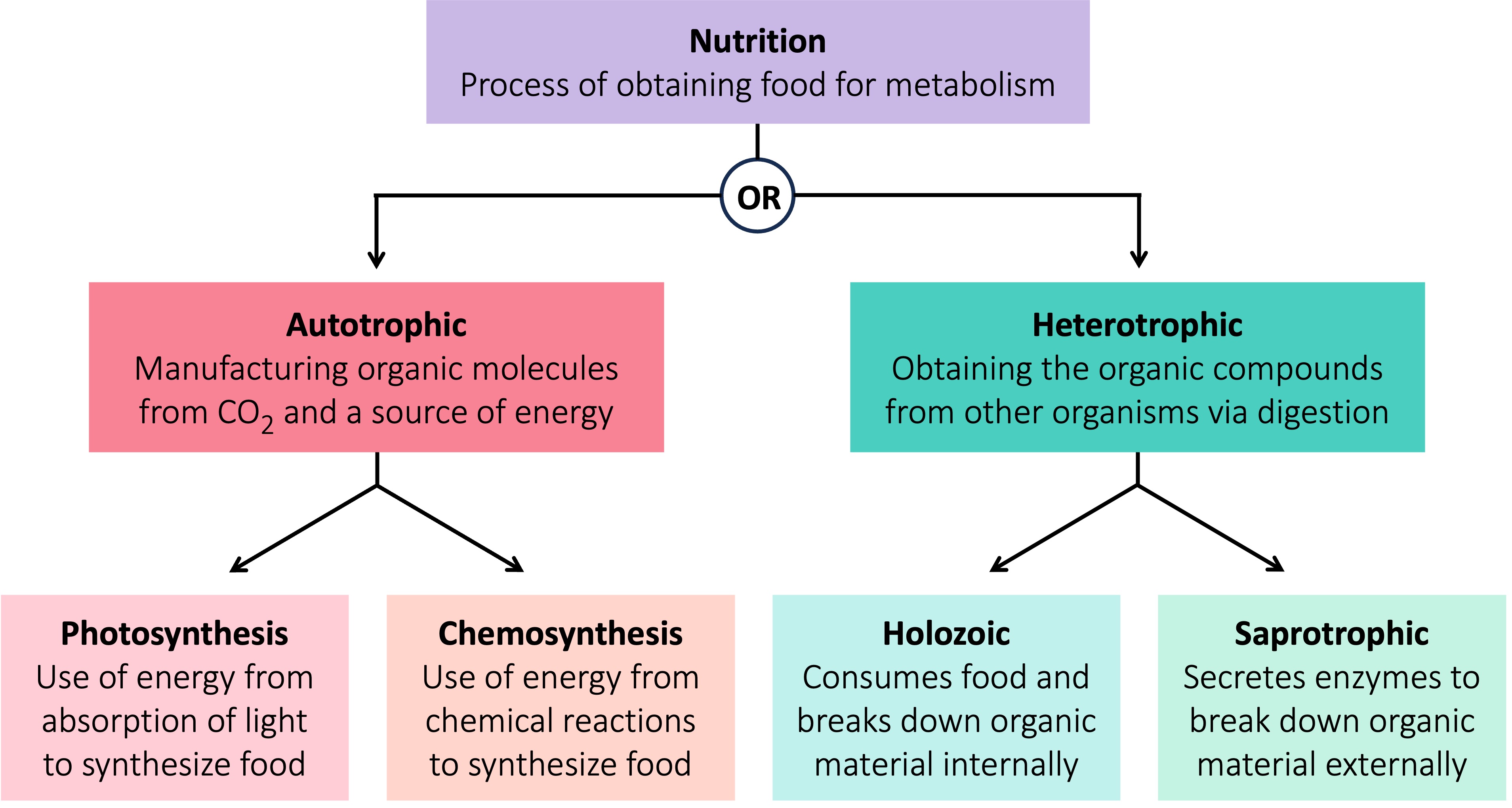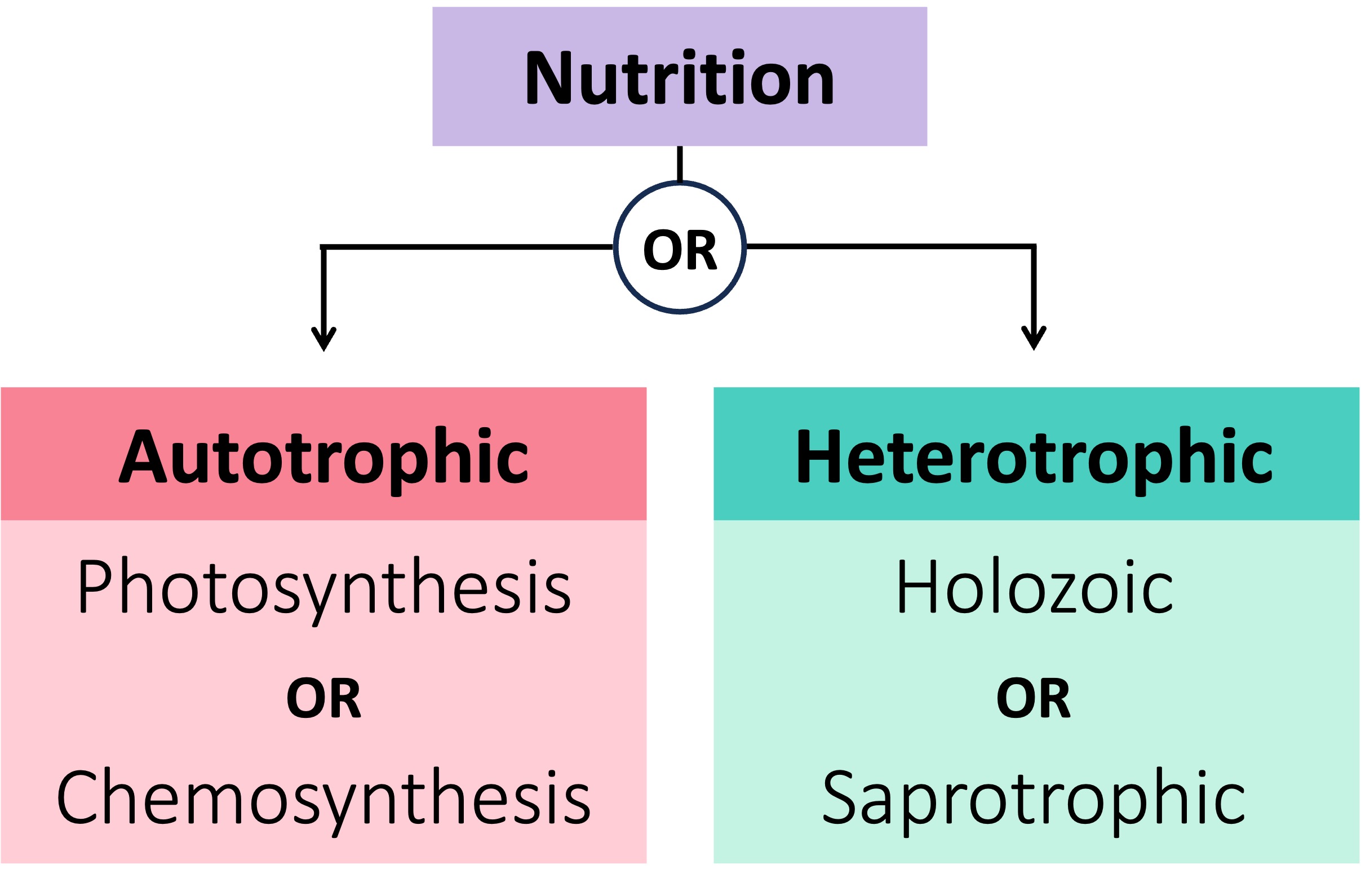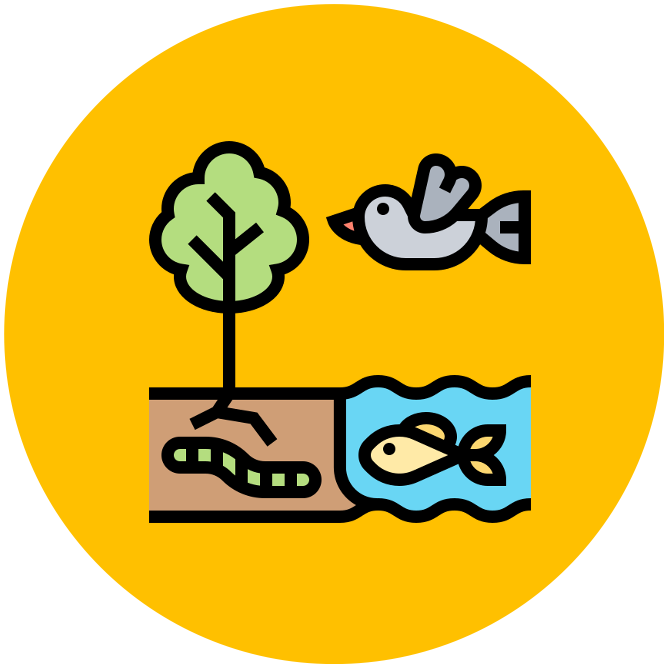

Modes of Nutrition
Living organisms produce cellular energy (ATP) from the breakdown of organic compounds (i.e. nutrients)
-
Organism can gain the organic compounds needed to undertake cellular respiration in a number of different ways
Autotrophic nutrition involves synthesising organic molecules from simple inorganic substances (e.g. CO2, nitrates)
-
Photoautotrophs derive the energy for the production of organic compounds from sunlight (photosynthesis)
-
Chemoautotrophs derive the energy required from the oxidation of inorganic molecules (chemosynthesis)
Heterotrophic nutrition involves obtaining organic molecules from other organisms (either living material or non-living remains)
-
Holozoic nutrition involves ingesting organic compounds and internally digesting the consumed material
-
Saprotrophic nutrition involves releasing enzymes to digest organic material externally and then absorbing the products
Nutritional Patterns


Archaea
Archaea are a metabolically diverse group of organisms capable of performing a variety of modes of nutrition
-
Some of these nutritional processes are unique to archaeans (e.g. methanogenesis) and these organisms commonly form mutualistic relationships
Archaea can be categorised into three main nutritional groups according to their energy source:
-
Phototrophs use light as an energy source to produce ATP (however they do not undergo photosynthesis or produce oxygen gas)
-
Lithotrophs use a variety of inorganic compounds to produce ATP (such as ammonia, hydrogen gas, hydrogen sulfide or iron oxide)
-
Organotrophs use organic compounds to produce ATP (these compounds may be obtained via heterotrophic nutrition)
Mixotrophs
Certain organisms may on occasion use both autotrophic and heterotrophic modes of nutrition, depending on resource availability
-
These organisms are mixotrophs and can be either obligate (must utilise both forms of nutrition) or facultative (can survive using only one form)
There are various examples of mixotrophic organisms, including:
-
Unicellular organisms such as Euglena (fresh-water protist) and dinoflagellates (marine plankton)
-
Coral (gain organic material from both symbiotic microalgae and filter feeding from the surrounding water)
-
Carnivorous plants (Venus fly traps), which photosynthesise and gain further nutrients from digesting insects
Venus Fly Trap




